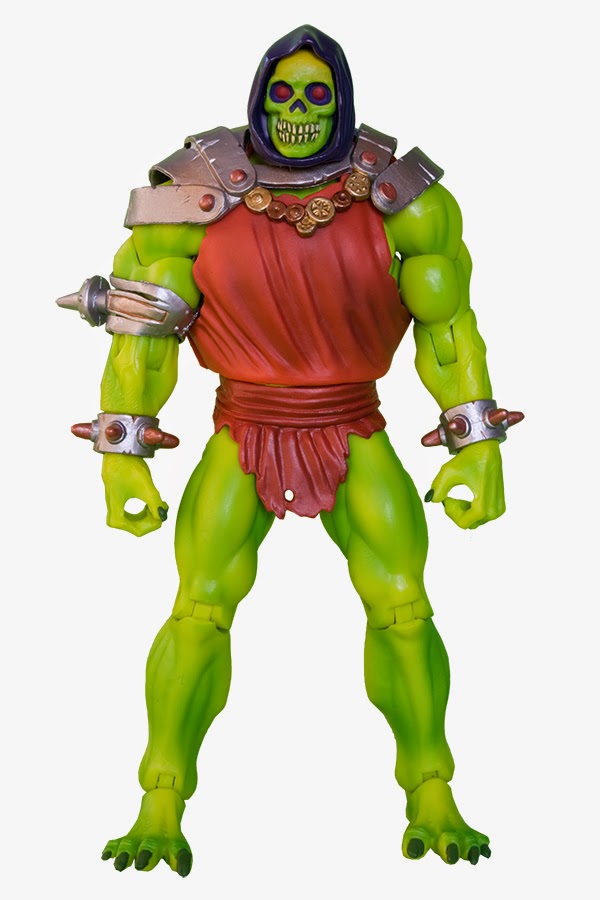My opinion, that is.
I don't have a ton of scientifically-based reasons for this. I wouldn't even say I have good reasons for this. I have only my own reasons for this. One of them would be simply that it was my edition. It was the edition I learned to play and given its lifespan it was the edition I have played the most. I knew it and knew it well. It had enough options to allow me to create scores of characters that were all unique and yet playable. I didn't have to comb through 8 million supplements to find a new prestige class or feat to make my character special and when it came time to min/max to achieve the best possible mathematical outcome I didn't have to put all my efforts into some lame-ass feat path that would give me super specialization in one specific type of spell while robbing myself of all other skills, abilities, or powers.
I like the layout. Compared to the 1st edition PHB, the 2nd edition is much easier to read with information presented in such a way that I could always find it. I like THAC0. I've heard people slag THAC0, but I think it is far preferable to BAB and what came later. I like the chart matrices from previous editions, but THAC0 is just the logical mathematical outgrowth from that. Whereas BAB is bullshit.
I like that demihumans are restricted in their levels. What? I'm a big racist? I think you mean speciesist. And no, I'm bloody well not. It was the trade off for all the cool powers that demihumans received that they be limited in class choice and class level. I like that paladins can only be human and only be lawful good. That's how it should be. Am I suggesting that elves don't have an equivalent to paladins in their culture? Yes. I am definitely suggesting that. No; I am definitely declaring that as a fact. I also know in my heart that a dwarf wizard is just wrong, wrong, wrong.
Did it have its problems?
Sure it did. Everything does. It is not common knowledge that much of the 2nd edition's initial content was consciously designed to remove the things that had gotten the older game into so much trouble with insane parental action groups and wrong-thinking religious action groups, like demons and moral ambiguity, but the loss of the barbarian, monk, and assassin classes and the half-orc race only improved the game in my opinion. Eventually those things would find their way back into the game through publications such as the Complete Priest's Handbook (monk) and Complete Thief's Handbook (assassin) as kits. I liked the initial historical focus, seen in the PHB and DMG in terms of what armor, weapons, and settings should be, providing backgrounds for the classes (such as could be provided) and prompting the publication of the greenback historical setting guides. The game had moved away from its sword and sorcery roots drawing from Howard, Moorcock and Leiber and had stepped into its own roots, so to speak. Also, that dillweed Drizzt Do'urden hadn't become the fecking Wolverine of the setting yet.
The Complete Handbooks line was a mostly great idea. The kits offered in those tomes gave a player a few bonuses, a few hindrances, and some player perspective. This is far different from the bollocks prestige classes of later editions that featured only bonuses, and some of those so specific as to make the character practically unplayable. Want to put your DM into a wall-banging* rage? Play a prestige class. You'll be constantly trying to engineer that perfect bonus moment or so utterly useless that he'll be positively** apoplectic as he tries to run the game. Yes, the Complete line bulked up the game with options, which might be a problem, but most of the kits and information in those books was a minor change, not the campaign destroying bollocks of even the initial 3rd edition feat list. And when TSR felt it was time to bring psionics back into the game proper, it did so in such a way as to create a unique class with its own rules and playing style, not just a mage by another name (like 3rd edition's psion bollocks...and let's not talk about the
Finally the 2nd edition had some insane, but inspired, campaign settings. The standards were there like Greyhawk and the Forgotten Realms (before that Spellplague nonsense) but 2nd edition brought us so much more like Ravenloft (movie and literature inspired gothic horror...before Vampire the Whinging) and its spin-off Masque of the Red Death (Victorian D&D before everybody was all Steampunk and stuff). 2nd edition left behind the terrestrial boundaries and took D&D to space with Spelljammer! It ripped of Frank Herbert's Dune series and gave us Dark Sun! For those of you that wanted to play in an analog of Earth's own historical medieval milieu, dealing with dynastic intrigue as well as dungeon exploring there was Birthright (also suitable for people that liked Games Workshop's Warhammer setting but didn't want to deal with Warhammer's rules and standards). No matter what you did, however, you were sure to have ADVENTURE! For ADVENTURE was the name of the game. Well, actually Advanced Dungeons and Dragons 2nd Edition was the name of the game but if A-D-V-E-N-T-U-R-E could be spelled I-N-D-I-A-N-A J-O-N-E-S then it sure as Hell could be named AD&D 2nd Edition.
*With his head, you perv.
**Strictly speaking, I don't think being in an apoplectic fit is ever a positive thing.
***I hate Psylocke so, so much. Eat a psi-dick, Marvel.















